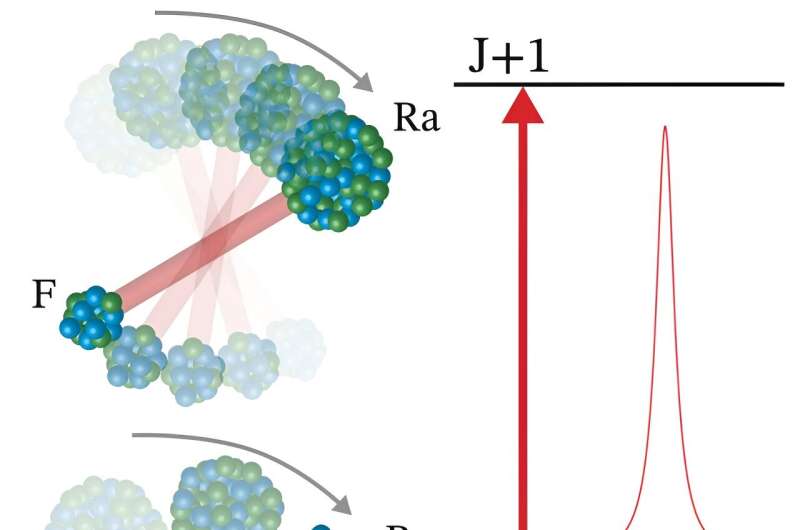This article has been reviewed according to Science X's editorial process and policies. Editors have highlighted the following attributes while ensuring the content's credibility:
fact-checked
peer-reviewed publication
trusted source
proofread
Nuclear physicists make first precision measurements of radium monofluoride

For the first time, nuclear physicists have made precision measurements of a short-lived radioactive molecule, radium monofluoride (RaF). In their study published in the journal Nature Physics, the researchers combined ion-trapping techniques with specialized laser systems to measure the fine details of the quantum structure of RaF.
This approach allowed the characterization of the rotational energy levels of this molecule as well as the determination of its laser-cooling scheme. Laser cooling is a method that uses laser light to slow down and trap atoms and molecules. These results represent a pivotal step for future experiments aiming to laser-cool and trap RaF molecules.
Scientists have predicted that molecules that contain heavy, pear-shaped nuclei, such as radium, are highly sensitive to nuclear electroweak properties and physics beyond the Standard Model. This includes phenomena that violate parity and time-reversal symmetry. Time reversal-violation, beyond the current constraints, is an essential condition to explain the matter-antimatter asymmetry of the universe. The new results give researchers a detailed characterization of the quantum structure of RaF, opening the use of this molecule in future experiments aiming to search for such effects.
Radioactive molecules containing octupole deformed nuclei, such as radium (Ra), promise to be exceptional quantum systems for use in studies of the fundamental particles and forces of nature. The unique pear-like shape of the radium nucleus, combined with the energy level structure of a polar molecule, can lead to an enhanced sensitivity to symmetry-violating nuclear properties of more than five orders of magnitude compared to stable atoms.
The researchers—nuclear physicists at Massachusetts Institute of Technology and collaborators—spectroscopically investigated the detailed structure of RaF, performing the work at the Collinear Resonance Ionization Spectroscopy (CRIS) experiment at the Isotope Separator On Line Device Radioactive Ion Beam Facility at the European Organization for Nuclear Research (ISOLDE—CERN).
The researchers' method allowed the mapping, with high sensitivity, of the energy levels of RaF, determining a laser cooling scheme for slowing and trapping this molecule. Scientists are rapidly developing methods of controlling and interrogating ultra-cold molecules. These methods, combined with the new capabilities of radioactive beam facilities to produce large amounts of radioactive molecules, such as CERN (Switzerland) and FRIB (US), are opening a new frontier in the exploration of atomic nuclei and the violation of the fundamental symmetries of nature.
More information: S. M. Udrescu et al, Precision spectroscopy and laser-cooling scheme of a radium-containing molecule, Nature Physics (2024). DOI: 10.1038/s41567-023-02296-w
Journal information: Physical Review Research , Nature Physics
Provided by US Department of Energy





















